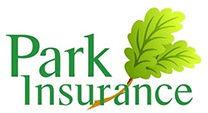What to use as bedding for your horse is an age-old concern that goes back thousands of years to when horses were domesticated for the first time. There are a variety of options available, each with its own pros and cons, but before we look at these, let’s consider why the type of bedding you use is important.
Warmth – Particularly in the winter months, warm bedding is essential for keeping your horse healthy and happy. Just as different types of material can affect how much insulation is provide by a human duvet, different types of horse bedding provide differing levels of warmth and insulation. Stable floors tend to be quite cold, so it’s important that a warm barrier is provided between it and your horse.
Absorption – A dry horse is a happy horse, and that means that bedding needs to be absorbent, particularly during the damper months.
Ease of storage – Your horse is going to get through a lot of bedding, so how easy it is to store is a particularly relevant issue.
Cost – Again, you’re going to be buying a lot of it over a long period of time, so how much your chosen horse bedding costs is a crucial factor.
Comfort – It’s not just humans that like comfort, and if you can do all you can to make your horse comfortable you’ll notice a difference in his demeanour and energy levels.
Types of horse bedding
There are many different types of horse bedding on the market, some of which have been around for a long time, and others which are much more recent developments.
Straw – Straw is a relatively expensive form of horse bedding if you can get it in your local area. However it is not as absorbent as some other types of bedding, and if your horse gets into the habit of eating it, this can result in digestive problems and other equine health issues.
Hay – Hay is a much better alternative to straw in some ways, as it will not cause your horse any trouble if he eats it. However it can be a more expensive form of horse bedding so may not be suitable if you’re on a budget.
Sawdust – This can be a cost-effective form of bedding and is quite absorbent, but the dust can get in horses eyes and cause irritation.
Rubber Matting – If your horse is suffering from capped hocks or a similar problem, the smoothness of rubber matting can be a perfect solution. It’s also much easier to clean than many other bedding materials, but can be expensive at first.
Wood Shavings – Wood shavings are affordable and provide plenty of warmth and comfort to the horse, but such bedding can get dusty. However, a new machine that has been launched makes it possible for horse owners to make their own dust-free shavings out of wood logs and off-cuts. According to Horse & Hound the Tonka mini wood shaving machine could save owners substantial amounts of money, but its high cost means that its better suited to yards with eight or more horses.
Flax – Similar in nature to straw, but because it is unpalatable there is little risk of the horse eating it. It’s quite absorbent and easy to dispose of, but is also relatively expensive.
Shredded paper – Shredded paper is an absorbent, dust-free and safe bedding medium, but the ink can rub off on the stable and even onto your animals.
The best horse bedding for your purpose will depend on your specific situation, and your horse, just as the best horsebox insurance policy is the one that best suits your needs. If you need any help with the latter, get in touch with Park Insurance.
